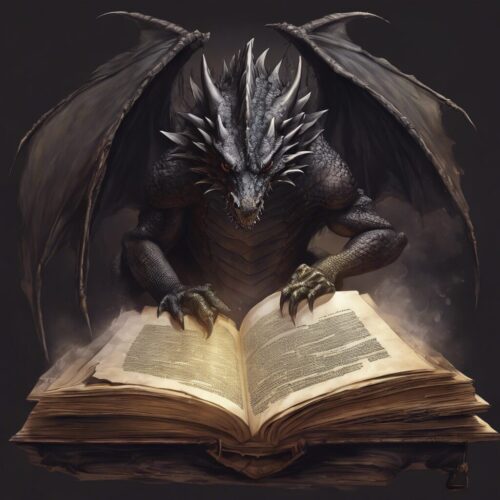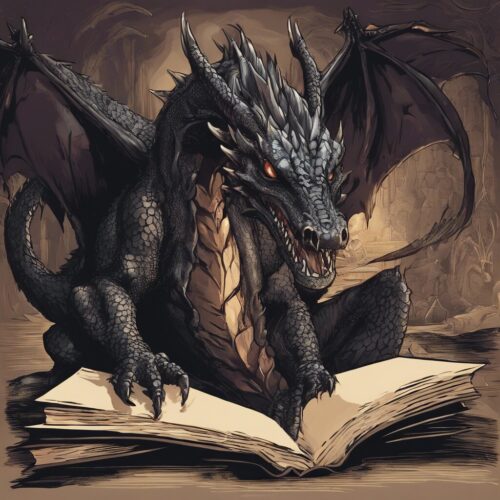The Enigmatic Allure: Exploring the Darkness of Dragons in Literature. If dragons have always seemed infinitely fascinating to you, then you’ve stepped into the right labyrinth of knowledge. The cobweb of mystery surrounding these majestic, mysterious and often terrifying creatures has enraptured readers since time immemorial. With their fiery breath, glittering scales, and piercing gaze, dragons have roosted in our literature long enough to warrant a thorough analysis.
The Evolution of Dragon Depictions in Literature
Back in the ancient civilizations, dragons were revered as divine beings. Early Greek and Chinese mythology perceived dragons as deities of power and life. However, their representation underwent a sea-change in the mediaeval times, especially during the middle ages in Europe. They were depicted as malevolent creatures – the embodiment of literal hellfire – feeding off human flesh and sowing seeds of destruction.

Move forward to Victorian era literature and you get a different shade of dragons. The whimsical, often mischievous depictions in Lewis Carrol’s ‘Jabberwocky’ or J.R.R. Tolkien’s ‘The Hobbit’ seemed to beat the fearful image with a softer edge.
Contemporary Dragon Portrayals
In contemporary literature too, the dragon narrative has evolved. Let us flip through the pages of J.K. Rowling’s ‘Harry Potter’ universe or George R. R. Martin’s ‘Game of Thrones’ series. While dragons are still feared, they are also respected and revered – allies to be sought after in the endless battles for power.

Symbolism of the Dark Dragon
Irrespective of these portrayal shifts, a constant feature of dragons has been their association with darkness. They symbolize the unknown, the chaotic forces of nature and the darker side of human nature. This exploration of darkness through dragons transcends language and culture, linking various strands of global storytelling together.
Unlocking the Enigma of the Dark Dragon
Like a coin, this darkness is two-sided – it could represent evil, hate, and fear, but also power, mystery and magic. By plumbing these depths, authors reveal not just the dragon’s darkness but also the darkness within humans, in doing so, asking us to face our own.

In conclusion, our literary journey with dragons is far from over. As we continue to morph the image of the dragon to reflect the contemporary ethos, the iconic symbol of darkness continues to hold sway, forcing us to face the complex tapestry of human experience.
